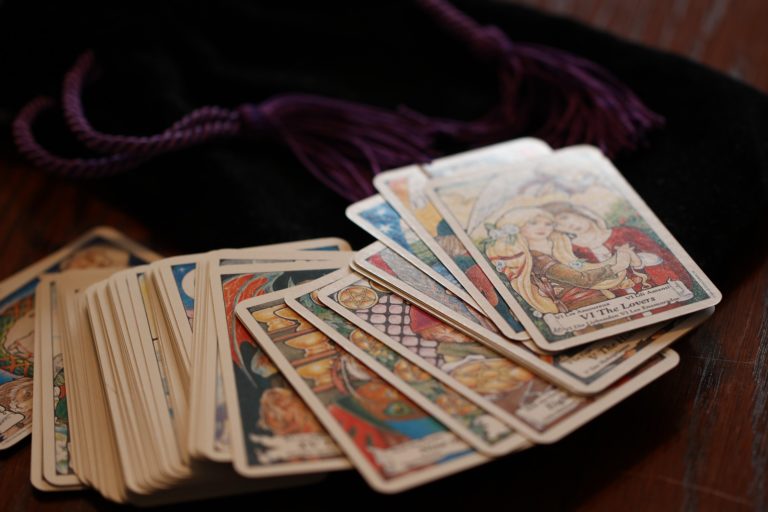Skepticism is not profitable. While entire industries have been built on the exploitation of our cognitive biases, advocates for skepticism struggle to eke out a living. A handful of magazines, started early enough that competition for eyeballs was more limited, have survived, but many other promising ventures aimed at instilling scientific skepticism succumbed to premature deaths.
These projects rarely get obituaries. Rather, they are felled by market forces and disappear in silence. We often learn about their demise by accident. I casually mentioned one of these projects to a journalist I interviewed for this article and she had no idea. “Bad Science Watch had to fold??” she asked, followed by a swear word that indicated the kind of surprised-not-surprised sentiment all-too-common these days. “It just slipped away like so many others….”
Skeptical communities are quick to celebrate their success stories: the people whose names everyone knows, the podcasts that have been around for a decade or two, the yearly events that still draw hundreds of people. Recognising triumph is important. But there is also value in shining a light on promising skeptical non-profits, YouTube channels, and websites which had to end because the money wasn’t there. To anyone interested in building a sustainable presence within skepticism, there are lessons to be learned about the limits of volunteerism, the expectations of charitable foundations, and who exactly cares about facts, truth, and journalism in this day and age.
We have the talent. But where is the money?
Quiet pandemic deaths
Bad Science Watch was an independent non-profit consumer watchdog in Canada whose aims was to advocate for good science and counter the kind of bad science that impacted the lives of Canadians. You can’t access its website anymore, because in the early days of the pandemic, donations dropped off and volunteers started leaving the organisation. Expenditures were greater than donations, so its executive director, Ryan Armstrong, decided to pull the plug. The actual projects pursued by Bad Science Watch were attractive to volunteers. But the day-to-day operations needed to keep the group afloat? Less so.
Armstrong graduated with a Ph.D. in biomedical engineering, and while he was in grad school, he came across an advert for a local event. It featured a chiropractor who was claiming to manage cancer through various alternative therapies. There were even radio adverts urging parents to bring their children to the chiropractor’s clinic if they had cancer. “I just found this so repulsive,” Armstrong tells me. In digging into chiropractic, he discovered that this was a well-funded machine whose regulatory college seemed lenient, to the detriment of the public. “It felt like I was unravelling an elaborate conspiracy of sorts.” He reached out to many journalists and was shocked to find they had no real interest in writing about a pseudoscientific practitioner claiming to help with cancer. He turned his attention to local advocacy groups and discovered Bad Science Watch.
He first joined as a contributor and later took over as its executive director, never receiving any money for it. One of the major accomplishments of Bad Science Watch was to systematically document unauthorised claims made by manufacturers of natural health products, a project which would go on to receive a fair amount of press coverage. But in 2020, as bills accumulated and Armstrong was injecting his own money into the organisation to keep it alive, he decided to shutter Bad Science Watch. He is now on “a bit of hiatus” from skepticism, working as a cybersecurity specialist.
The story of the quiet pandemic death of Bad Science Watch reminds me of another, south of the Canadian border: Sense About Science USA. An offshoot of the UK’s own Sense About Science, it was run by Trevor Butterworth in a tiny space at the back of a cookie store in Brooklyn in order to keep overheads to the barest of minimums. He didn’t get free cookies, but he negotiated for free espressos, he tells me with a smile. “I didn’t abuse that either because baristas need tips.” On the organisation’s website, under the header “New,” a post from 2020, the year the non-profit was shut down. Butterworth had big plans, he says, as well as intellectual backing and a growing influence in the media, but the funders had lost interest.
In 2014, the Laura and John Arnold Foundation was interested in issues of reproducibility in the sciences. The Arnolds were drawn to the AllTrials campaign, whose goal was to improve transparency in the clinical trials that were run so that negative findings were no longer buried to skew the literature in favour of pharmaceuticals. They wanted to fund an American arm of the campaign, and Butterworth was approached. A journalism graduate hailing from Ireland, Butterworth had always been interested in philosophical questions close to a skeptic’s heart: what do we mean by evidence? by validity? by truth? Looking for a job after graduation, he landed at the Center for Media and Public Affairs (then independent, now at George Mason University in Arlington, Virginia), creating for them a daily website on media criticism in 1999. Essentially, fact-checking before fact-checking was cool. In what would turn out to be foreshadowing for Sense About Science USA, the funder for the project grew dissatisfied and pulled his money. A tiny project with minimal funding, Butterworth tells me, couldn’t exactly change America.
But when, years later, he would get funded by the Laura and John Arnold Foundation to spearhead Sense About Science USA and work on the AllTrials campaign in the United States, Butterworth also saw it as a way to fold in the important work he had been involved in after leaving the Center for Media and Public Affairs. He had been in charge of STATS, a project to explain how statistics were used and abused in the news media. Now, Sense About Science USA could also run STATS and help journalists improve their numeracy. The organisation’s accomplishments include working with the Library of Congress and giving seminars “on both sides of the aisle” on the importance of data, as well as delivering workshops to journalists to look at stories through the eyes of a statistician. “We ran one in D.C. at the American Geophysical Union,” he says, “and they ended up booting us out because it went on way past closing. The journalists had so many questions!”
So why did Sense About Science USA quietly disappear? “We hadn’t delivered a wow on AllTrials,” Butterworth explains, “so they said, we’re not really interested in improving journalists’ understanding of statistics. How ironic, with COVID a few years away.” He has since learned that the kind of outcomes they were looking to achieve requires many more years and a lot more money. He looked for other sources of funding but couldn’t find anybody who wanted to invest in the infrastructure of a nonprofit, i.e. its basic operational costs. Going after an outcome is sexy, but paying rent and employees’ salaries isn’t. He got hired as a consultant on the side and put some of that money back into the organisation to keep it going, much like Ryan Armstrong had done for Bad Science Watch. But COVID hit and consultancies dried up. Sense About Science USA was silently buried in early 2020.
Skepticism as a public good
Unless you are involved in skeptical outreach in your spare time and do it for fun, money tends to become an issue. The fact that everyone at Bad Science Watch (including its director) was volunteering certainly kept costs down, but there were legal fees, accounting fees, web hosting, as well as the cost to remain registered as a nonprofit in Canada. When the results of their project on the unauthorised claims made for natural health products were ready to be publicised, they paid a public relations company a few hundred dollars for a press release. These kinds of expenses added up and Bad Science Watch was solely reliant on donations: no corporate funding, no ads. When major events like the COVID-19 pandemic shake up the economy, donations can stop and the organisations dependent on them face tough choices.
There is a different funding model, what legacy media has famously relied on: advertising. This was the model behind Truth or Fiction?, a fact-checking website which was briefly managed by Brooke Binkowski. It had started in 1999, funnily enough as the conservative answer to Snopes. When its founder died, his family sold the website to a company that acts as a platform for publishers. The company reached out to Binkowski after she was famously fired from Snopes. They wanted her to partner with them, manage Truth or Fiction?, and leave its conservative bias in the past. She hired two more people from Snopes and created a non-hierarchical newsroom to go about fact-checking the Internet.
The money all came from ads, which was her intention, she tells me. She wanted an editorial firewall, with a plurality of ads (though nothing of a political nature). The problem with relying on ads, however, is that when the mood changes, you can end up on the chopping block. An advertiser, for example, can decide they don’t want their ad to run next to content that uses the word “immigration” or “abortion.” In the past few years, this list of keywords has often grown to include basically all of news. News is depressing and fewer advertisers want to be associated with it. When the company Binkowski was partnered with came to her in 2023 and told her they had lost a lot of money and the project wasn’t sustainable anymore, she chose to stay until the bitter end, wrapping up on-going stories before finally turning off the lights last fall.
I asked all three of them—Binkowski, Armstrong, and Butterworth—what lessons they have learned from their experiences and what words of advice they have for anyone trying to similarly build a sustainable project in the realm of skepticism and fighting back against misinformation. For Armstrong, former executive director of Bad Science Watch, the key is institutional backing. Here, he references my own place of work, the Office for Science and Society based at McGill University. As far as we know, we are the only university-based office dedicated not to scientific research but to helping the public separate sense from nonsense and to educating people on matters of critical thinking and scientific skepticism. Our office is sustainable because of a generous donation made by Lorne Trottier in 2011.
Armstrong recognises the value in doing this kind of work within a pre-existing institution. Although it limits the amount of advocacy you can do, many of Bad Science Watch’s pursuits could have been academic research projects, a path already blazed by people like Timothy Caulfield at the University of Alberta, who regularly publishes papers about the representation of stem cell clinics on Twitter and of homeopathy in academic journals. “It’s a public good,” Armstrong tells me about the work of promoting skepticism. “That makes it an easy sell to an institution.”
Trevor Butterworth agrees that it is a public good. “The whole point of the nonprofit world is that these are public goods that cannot be, for a variety of reasons, turned into market goods.” Friends of his told him that the service he was managing—where journalists could freely ask questions to a statistician in order to write more accurate stories involving data—surely was worth something to these journalists. They should pay for the service. But of course, news organisations and freelance journalists are not exactly overflowing with money. “If something is a public good,” Butterworth says, “treat it as such and fund it that way!” Instead, foundations often refuse to fund infrastructure and settle on financing sexy projects for a few years before moving on when these projects fail to significantly change the world. “The short-termism of so many foundations just dooms all of these projects, in my view.”
When nonprofits end up in front of foundations, they have to ask for a certain amount of money. But this creates a sudden death situation, whereby the wrong figure ends the discussion and the nonprofit usually doesn’t get to come back. Skeptics asking foundations for financing are thus faced with the problem of either asking for too much money and getting refused or asking for too little and setting themselves up for failure. Butterworth now knows that bringing AllTrials to the United States and effecting real change would have necessitated at minimum a ten-year campaign with a price tag of maybe 20 million dollars. To realise that, you need “pure luck,” he confesses, to get in front of the right rich person or the right head of a foundation. We are at the mercy of the wealthy.
In Butterworth’s personal experience, most nonprofits and the foundations of which they ask money don’t have any real-world experience in product development, a skill that would increase the chances of projects delivering on their promises. Foundations, he thinks, should stop hiring academics and instead recruit product developers with successful track records. These same foundations should also devote resources to creating the kinds of business services—human resources, marketing, communications support—that nonprofits will need to use but that foundations are rarely willing to finance.
Ryan Armstrong believes Bad Science Watch would have been in a better position if its operations and executive staff had been paid. That was the long-term goal. But even at their peak they were very far from that, and Armstrong himself admits that fundraising was not a skill he possessed. This contributes to the major asymmetry between the harm bad actors can do and the good that skeptical organisations can hope to achieve, especially when those of us at the wheel lack the business savviness of charlatans because we studied biology or English literature instead. “It’s very easy to get burnt out in the field,” he adds. “You put in an enormous amount of work and often it feels like the impact you’re having is only transient.”
Binkowski couldn’t agree more, as she feels exhausted and pessimistic these days, though still hopeful for an eventual turnaround. Her advice is not financial, but much more personal. “It’s very effective to get into people’s faces and say, ‘You’re a liar!’” she finally says after mulling over how depressing our era has become. “If you are forthright and you have authenticity and integrity, hold on to that. It’s very powerful. Be outraged. Stand up for each other. Stand up for the public. Write stuff down so you remember the truth.” These days, she is redirecting her energies into finishing her very first novel. It’s a fantasy book where purveyors of disinformation are actually performing a type of magic. Teaching people about critical thinking through fiction is certainly an underused strategy in our community.
The quiet deaths of so many of these pro-skepticism endeavours should alarm all of us. To the wealthy who watch as our world becomes an ever-noisier information chaos and wonder what to do, invest in talented skeptics. Allow them to build sustainable infrastructure. Give them time to bring large projects to fruition. Help finance truth-seeking. Without money, our battle has already been lost to entropy and wishful thinking.










